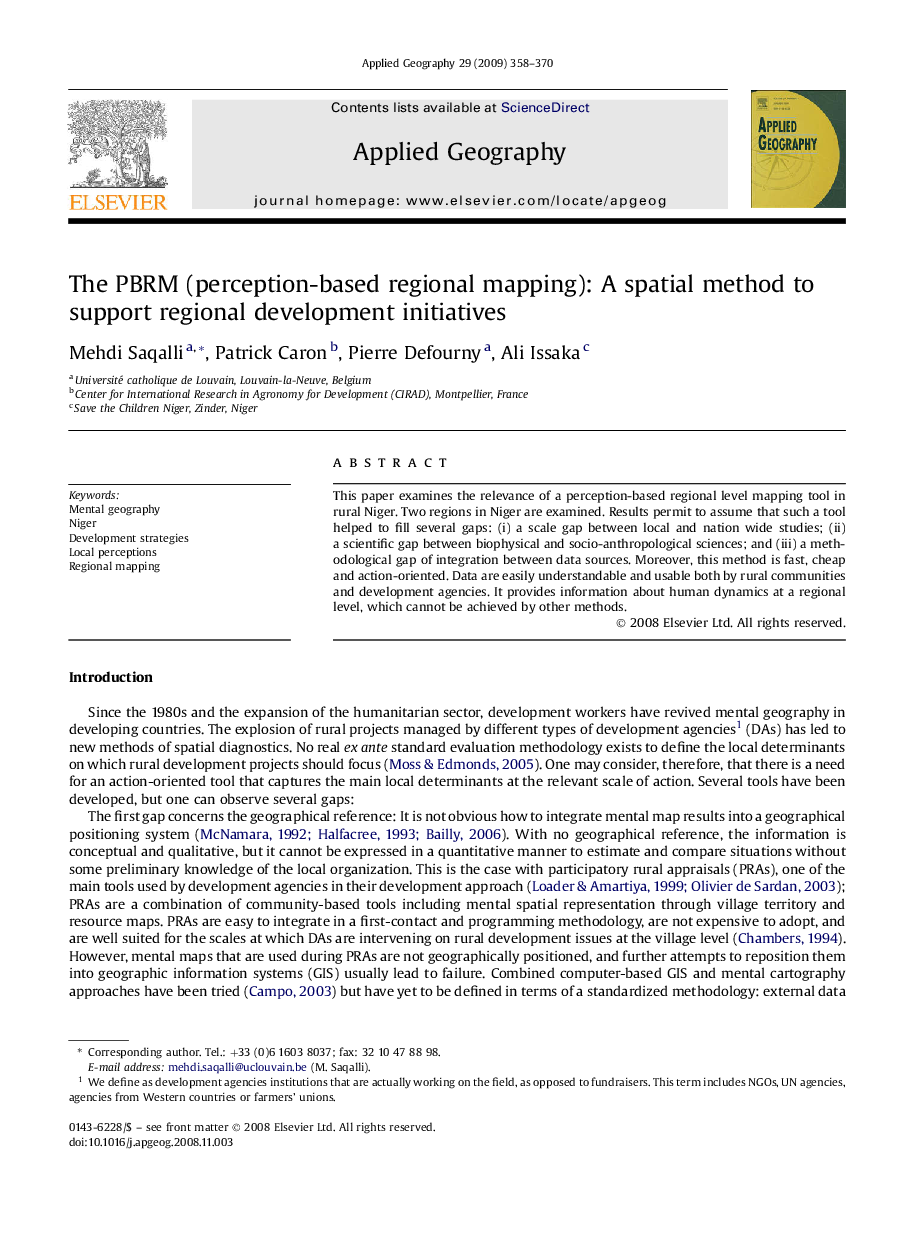| Article ID | Journal | Published Year | Pages | File Type |
|---|---|---|---|---|
| 83888 | Applied Geography | 2009 | 13 Pages |
Abstract
This paper examines the relevance of a perception-based regional level mapping tool in rural Niger. Two regions in Niger are examined. Results permit to assume that such a tool helped to fill several gaps: (i) a scale gap between local and nation wide studies; (ii) a scientific gap between biophysical and socio-anthropological sciences; and (iii) a methodological gap of integration between data sources. Moreover, this method is fast, cheap and action-oriented. Data are easily understandable and usable both by rural communities and development agencies. It provides information about human dynamics at a regional level, which cannot be achieved by other methods.
Related Topics
Life Sciences
Agricultural and Biological Sciences
Forestry
Authors
Mehdi Saqalli, Patrick Caron, Pierre Defourny, Ali Issaka,
